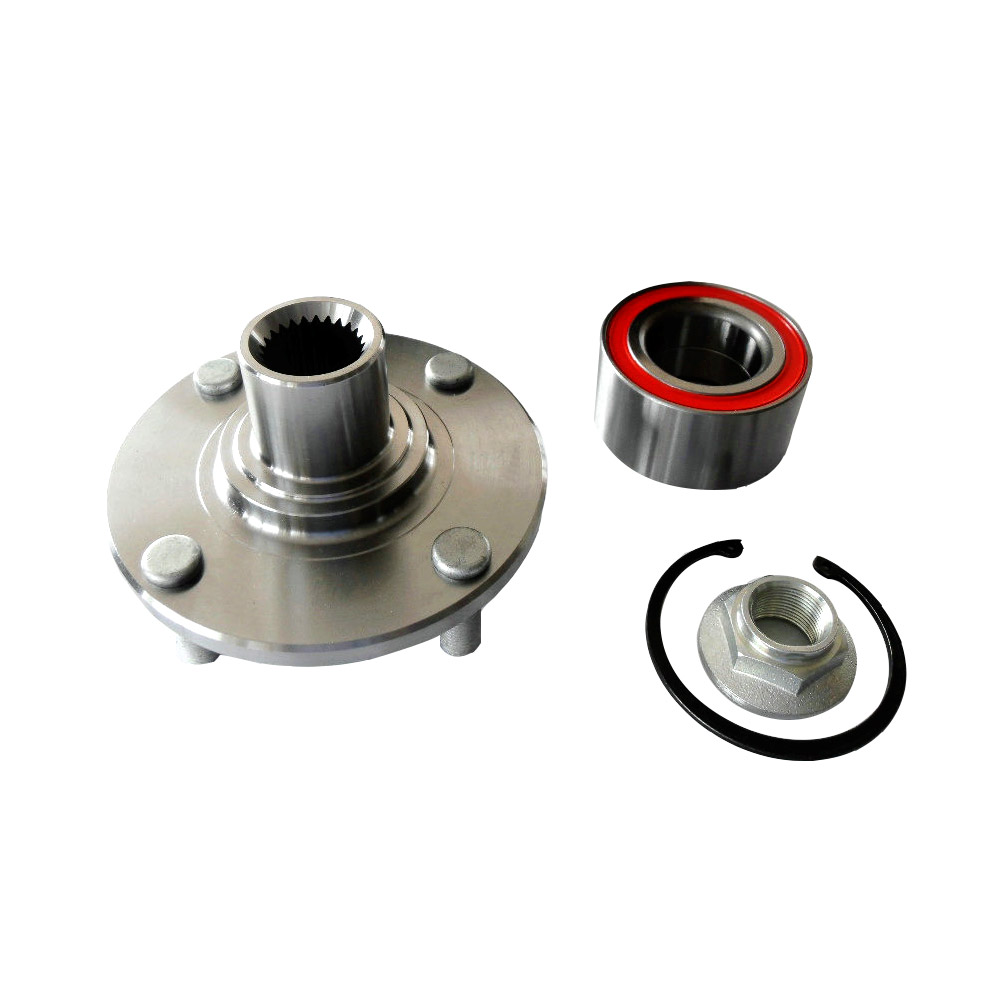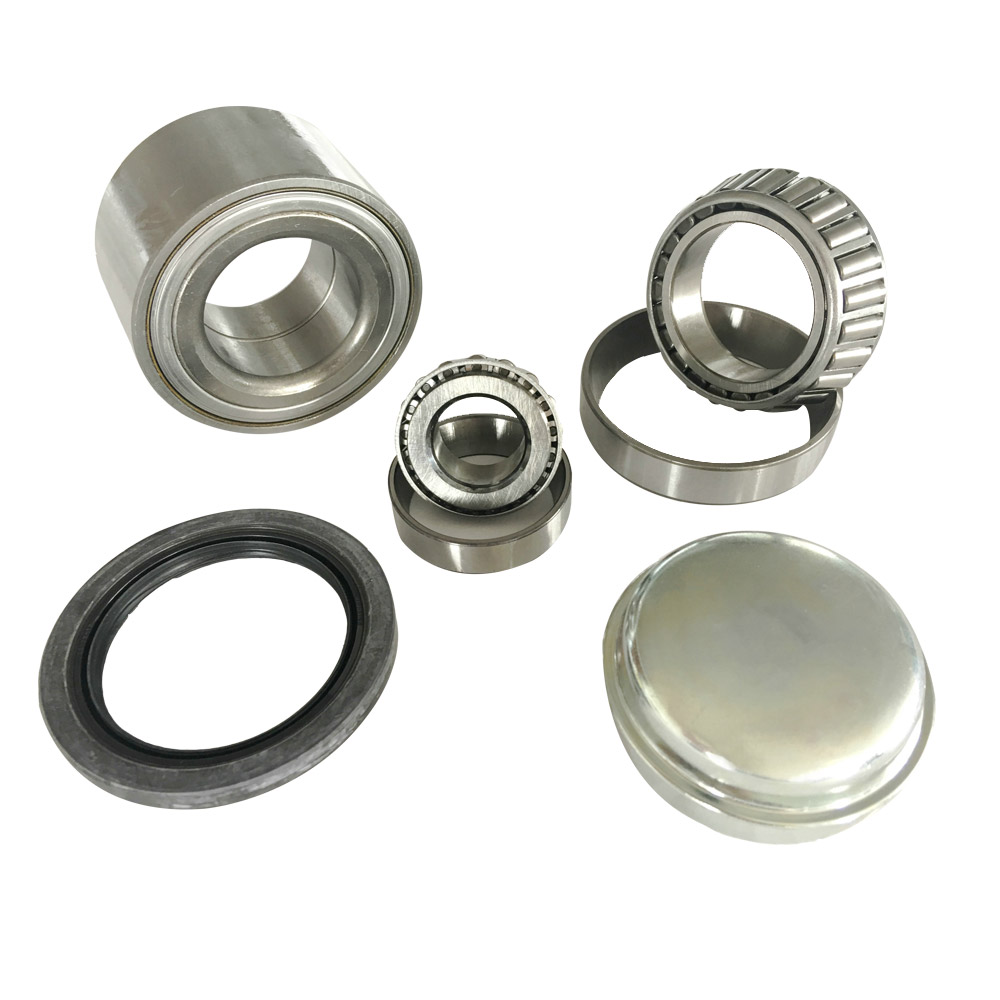The wheel bearing hub assembly is a critical component in modern vehicles, playing a key role in the smooth operation of the wheels, vehicle stability, and overall safety. It is responsible for supporting the vehicle’s weight, allowing the wheels to rotate freely, and maintaining proper alignment with the suspension and braking systems. When a wheel bearing hub assembly begins to fail, it can compromise driving safety, handling, and vehicle performance. Recognizing the common signs of a failing wheel bearing hub assembly is crucial for timely maintenance and avoiding costly repairs or accidents.
1. Understanding the Wheel Bearing Hub Assembly
To fully understand the signs of failure, it is helpful to know the role and construction of a wheel bearing hub assembly:
- Wheel Bearings: These are precision-engineered steel or ceramic components that reduce friction and allow smooth wheel rotation.
- Hub: The hub connects the wheel to the vehicle and houses the bearing. It is also the mounting point for the brake rotor or drum.
- Seals and Lubrication: Bearings are often sealed and pre-lubricated to prevent contamination and reduce maintenance requirements.
Together, the hub and bearing assembly ensure the wheel rotates efficiently while supporting vehicle weight and maintaining alignment with suspension and braking systems. Any degradation in the assembly can affect vehicle performance, handling, and safety.
2. Unusual Noises from the Wheels
One of the earliest and most noticeable signs of a failing wheel bearing hub assembly is unusual noise emanating from the wheels. Drivers may hear:
- Grinding Noise: A metallic grinding sound that increases with speed often indicates that the bearing surfaces are worn or damaged.
- Humming or Growling: A humming or growling noise, especially during turns, is a common indicator of uneven bearing wear.
- Clicking or Popping: Bearings that are severely damaged may produce intermittent clicking or popping sounds when the wheel rotates.
These noises often become more pronounced during acceleration, deceleration, or cornering, signaling that immediate inspection is necessary. Ignoring such sounds can lead to complete bearing failure.

3. Vibration or Wobbling in the Steering Wheel
A failing wheel bearing hub assembly can lead to vibration or wobbling while driving:
- Steering Wheel Shake: Drivers may feel vibration or shaking, especially at higher speeds. This happens when the bearing tolerances have worn unevenly, causing the wheel to wobble.
- Uneven Tire Wear: Excessive play in the hub assembly may lead to uneven contact with the road, resulting in tire wear patterns such as cupping or feathering.
- Vehicle Pulling to One Side: Misaligned or loose bearings can cause the vehicle to pull slightly to one side during driving.
Vibrations and steering irregularities are not only uncomfortable but also indicate that the wheel may be less stable, increasing the risk of accidents.
4. Increased Play or Looseness in the Wheel
Physical inspection can reveal excessive play in the wheel, another key sign of a failing hub assembly:
- Wheel Movement: When the vehicle is lifted, manually rocking the wheel side-to-side or top-to-bottom may reveal unusual movement.
- Bearing Wear: Excessive play usually indicates worn bearings inside the hub assembly.
- Impact on Handling: Loose bearings affect suspension geometry, reducing handling precision and vehicle responsiveness.
Detecting play early can prevent further damage to the hub, suspension, and braking components.
5. ABS (Anti-lock Braking System) Malfunction
Many modern vehicles have wheel speed sensors integrated into the wheel bearing hub assembly. When the bearing begins to fail:
- ABS Warning Light: The ABS warning light may illuminate on the dashboard, indicating sensor or wheel rotation irregularities.
- Erratic Brake Response: Failing bearings can affect wheel speed sensor readings, leading to unexpected ABS activation or reduced braking efficiency.
- Electronic Stability Issues: Malfunctioning sensors may compromise traction control or stability systems.
Vehicles equipped with integrated sensors require particular attention, as ignoring warning lights can lead to safety risks during braking or emergency maneuvers.
6. Pulling or Drifting During Braking
A failing wheel bearing hub assembly can cause uneven braking or pulling:
- Uneven Pressure: Worn bearings can cause the wheel to sit slightly off-center, resulting in uneven brake pad contact with the rotor.
- Vehicle Pulling: The vehicle may pull to one side during braking, especially at low speeds or on wet surfaces.
- Noise During Braking: Grinding or humming noises may be heard while applying the brakes, signaling bearing or hub damage.
This symptom indicates a serious compromise in wheel alignment and hub integrity, requiring immediate attention to prevent accidents.
7. Excessive Heat Near the Wheel Hub
Wheel bearing hub assemblies generate heat during normal operation due to friction. However, a failing bearing may produce excessive heat, which can be detected:
- Hot Wheel Hub: After a short drive, the affected wheel may feel hotter than the others.
- Burning Smell: In extreme cases, friction may cause a noticeable burning smell, signaling imminent failure.
- Lubrication Failure: Overheated bearings often indicate that seals have failed or lubrication has been compromised.
Excessive heat can lead to catastrophic bearing failure, potentially causing the wheel to seize or detach in extreme cases.
8. Visual Signs of Damage
Some signs of a failing wheel bearing hub assembly are visible upon inspection:
- Leaking Grease: Damaged seals may leak grease from the hub, contaminating brakes and surrounding components.
- Corrosion or Rust: Exposure to moisture or road salt can cause rust on the hub assembly, accelerating bearing wear.
- Deformation or Cracks: Structural damage to the hub itself may be visible, particularly in high-mileage or accident-affected vehicles.
Regular visual inspections can help detect early issues before they compromise safety or vehicle performance.
9. Causes of Wheel Bearing Hub Assembly Failure
Understanding the causes of failure helps in prevention:
- Wear and Tear: Bearings naturally degrade over time due to friction and load.
- Contamination: Dirt, water, or chemicals entering the hub can accelerate wear.
- Improper Installation: Misalignment or overtightening during installation can damage bearings.
- Excessive Load or Impact: Overloading the vehicle or hitting potholes and curbs can stress the hub assembly.
- Neglecting Maintenance: Lack of inspection or lubrication (for serviceable bearings) can lead to premature failure.
Preventive measures, including proper installation, timely maintenance, and avoiding overload, can extend the lifespan of the hub assembly.
10. Consequences of Ignoring a Failing Wheel Bearing Hub Assembly
Driving with a failing wheel bearing hub assembly can have serious consequences:
- Wheel Detachment: In extreme cases, a completely failed bearing can cause the wheel to detach.
- Brake Failure: Compromised wheel alignment affects braking efficiency.
- Suspension Damage: Excessive play can damage suspension components, leading to costly repairs.
- Accidents: Reduced vehicle control, steering irregularities, and brake issues increase the risk of collisions.
Prompt recognition and replacement are critical for safety and vehicle integrity.
11. Inspection and Replacement Guidelines
To ensure safety:
- Professional Diagnosis: Mechanics can measure wheel play, inspect for noise, and check ABS sensor signals.
- Replacement Intervals: Modern hub assemblies often last 100,000 miles or more, but inspection is essential after 70,000–80,000 miles.
- OEM vs. Aftermarket Parts: Choosing quality OEM or high-quality aftermarket assemblies ensures longevity and compatibility.
- Complete Hub Replacement: Most modern vehicles require replacing the entire hub assembly rather than individual bearings, simplifying maintenance and ensuring reliability.
Regular maintenance and timely replacement prevent accidents and preserve vehicle performance.
Conclusion
A failing wheel bearing hub assembly can severely compromise vehicle safety, handling, and performance. Common signs include unusual noises, steering vibration, wheel play, ABS warning lights, pulling during braking, excessive heat, and visible damage. Understanding these symptoms, recognizing the causes, and performing regular inspections are essential for maintaining vehicle safety.
Timely replacement of a worn or damaged hub assembly not only protects the vehicle and its passengers but also prevents costly repairs to suspension, brakes, and tires. Being attentive to the early signs of failure ensures reliable performance, smooth operation, and safe driving for years to come.






